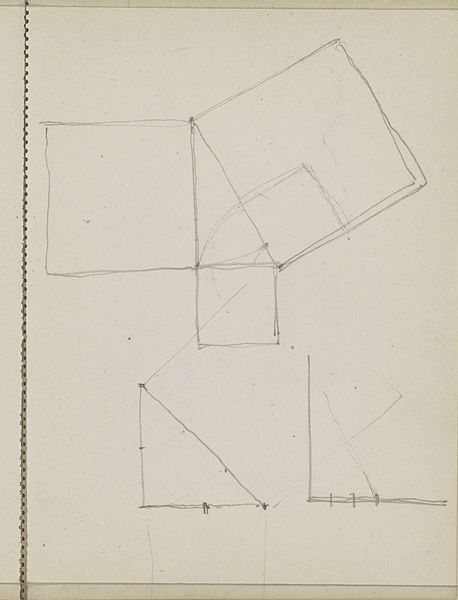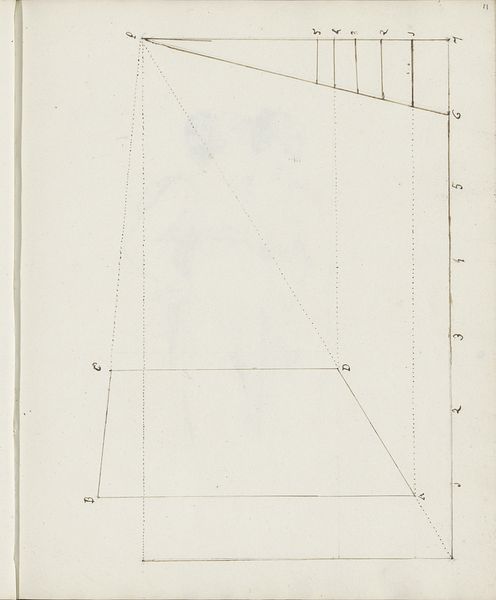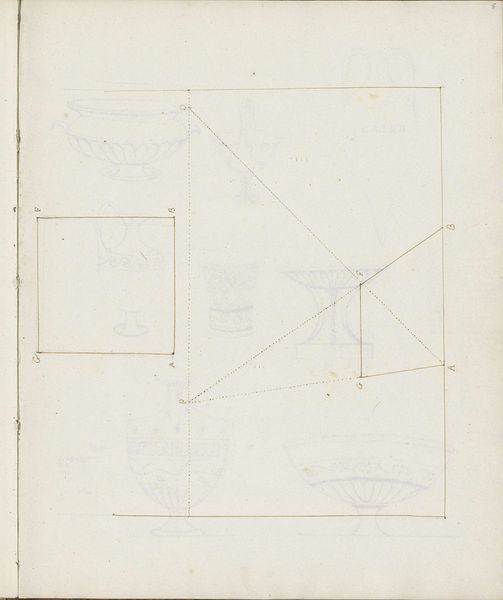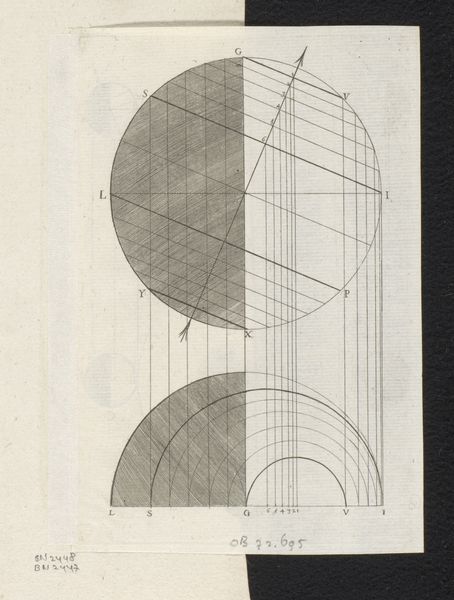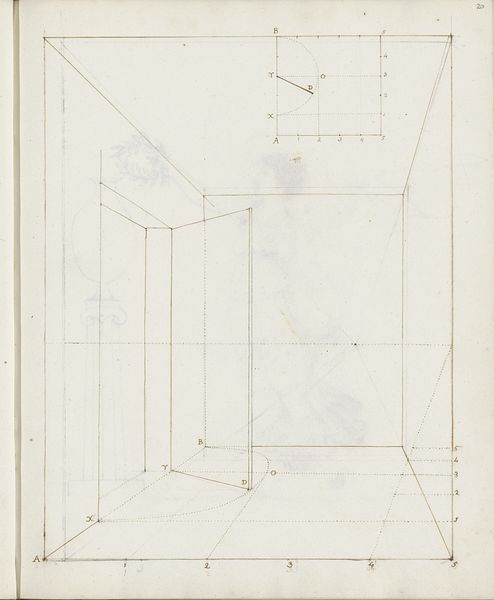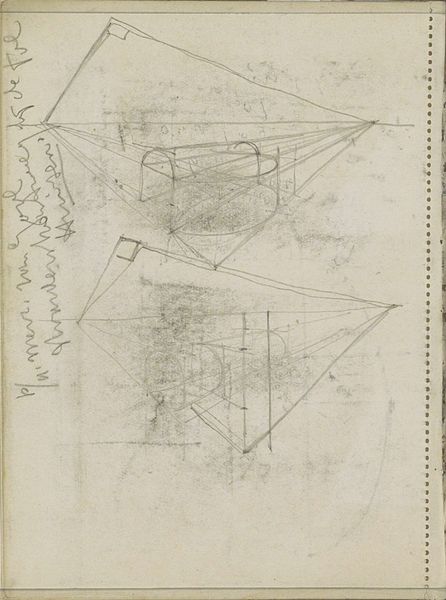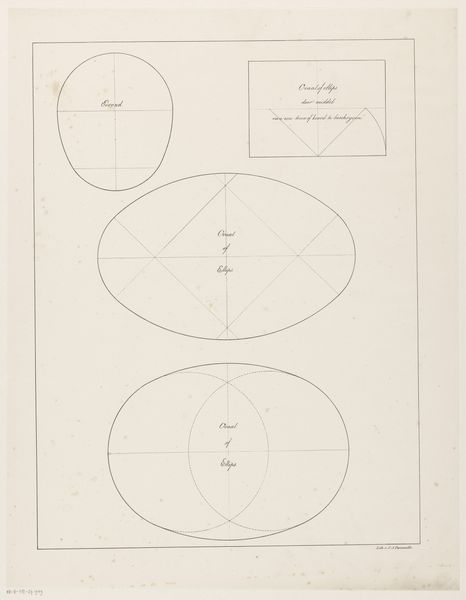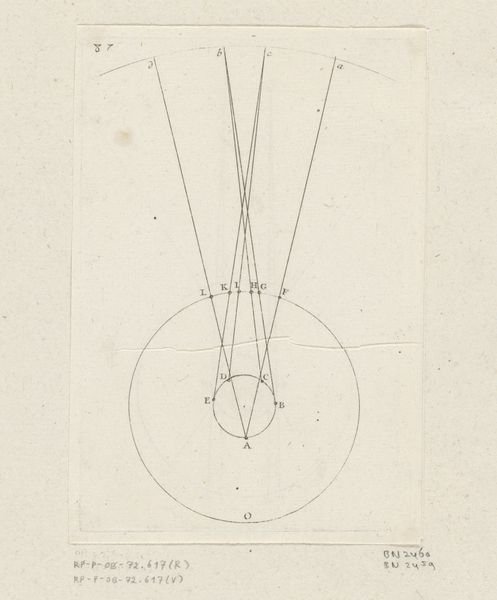
drawing, paper, pencil
#
drawing
#
neoclacissism
#
paper
#
form
#
geometric
#
pencil
#
abstraction
#
line
Dimensions: height 279 mm, width 211 mm
Copyright: Rijks Museum: Open Domain
Editor: Here we have Reinier Vinkeles’ “Rechthoekig vlak met diagonale lijnen,” made between 1751 and 1816, utilizing pencil on paper. It's currently held at the Rijksmuseum. Initially, the geometric arrangement of lines comes across as quite stark and controlled. How do you interpret this work, focusing on its formal elements? Curator: It strikes me first as a study in spatial relationships, reduced to its most essential elements. Notice how the precisely rendered lines create a dialogue between the flat picture plane and an illusion of depth. It lacks tonal modeling but suggests the use of formal principles in drawing practices. The composition explores abstraction. Editor: So you’re focusing on how the artist uses lines to explore geometric concepts. Are there classical compositional techniques at play here? Curator: The Neoclassical tag alludes to a renewed interest in geometric clarity, order, and rationality, but I would not describe this piece in classical compositional terms. The organization of the line within the frame dictates your attention to the precision within abstraction, focusing not on symmetry, but controlled asymmetry. Editor: It's interesting how limiting the materials draws attention to the concepts being presented. I find the tension between flatness and depth really engaging. Curator: Exactly. It’s through these basic elements that the artwork creates the illusion of an internal logic. Hopefully the audio guide helps visitors connect the visible components with theoretical ideas. Editor: I agree, by limiting its materials it truly showcases form itself as the primary subject of the piece. It helps underscore the rational foundations of artmaking.
Comments
No comments
Be the first to comment and join the conversation on the ultimate creative platform.
